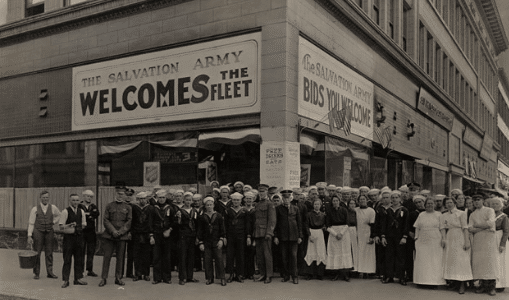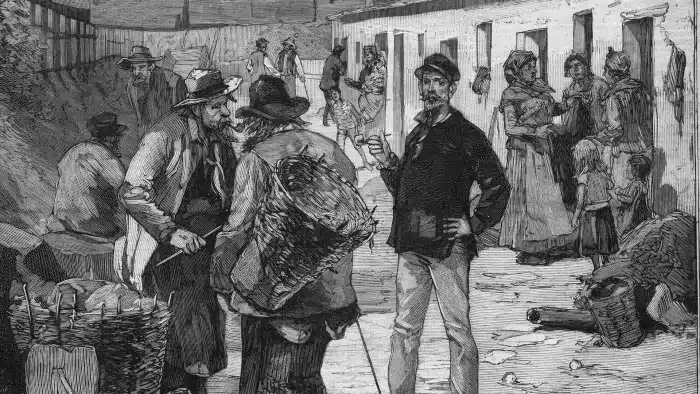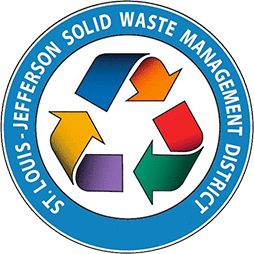
It’s easy to believe that recycling is a recent development considering all the technology we currently use to sort and recycle materials. However, humans have understood the importance of recycling and have been utilizing this process since the Bronze Age! Let’s go over the history of recycling and how it became what we know it as today.
First, let’s get a good understanding of what recycling is. The Environmental Protection Agency or EPA defines recycling as “the process of collecting and processing materials that would otherwise be thrown away as trash and turning them into new products.”
Ancient Recycling
Ancient civilizations learned how to form glass bottles around 1500 BC by using fire to strengthen and fortify their clay. Archaeologists have found evidence that glass has been recycled since its development. While studying the ancient Turkish city of Sagalassos, researchers “uncovered glass shards, kiln fragments, and fuel ash slag (byproduct of melted iron) all pointing to a history of recycling glass in these regions.” These remnants all suggest that recycling was incorporated into the earliest forms of glass production in order to preserve natural resources.
Just two years ago, in 2020, head researcher Dr. Karol Juchniewixz and his team from ArcheoConsultant found evidence of recycling dating back to 985 BC. The researchers discovered 3,000 year-old tools in Sarud Al Hadid, Dubai. These tools were made from copper, bronze and iron that were reclaimed from broken ceramics.

Considering how difficult it was to obtain new resources to make new products in the Bronze Age, it is likely that scrap metal recycling has been around since metalworking began. There is clear evidence of scrap metal recycling dating back to 400 BC. It is commonly believed that Romans melted down old bronze coins and jewelry for statues, weapons, and other essential items. Tulane University archaeologist, Allison Emmerson, and her team also found mounds of trash that were being collected, sorted, and resold by the Romans dating back to 79 AD. This suggests that recycling collection and sorting has been around for almost 2,000 years!
The first recorded use of recycled paper was in Japan’s Heian Period in 1031 AD. Ancient Japanese people began recycling paper almost as soon as they learned how to produce it. Recycling naturally became part of paper production and consumption. The Japanese even valued recycled paper more than paper made from new resources. Kazuko Hioki from the University of Kentucky provides excellent details and photographs of recycled paper from the Heian period in their research article “Investigation of Historical Japanese Paper.”
Colonial and Early American Recycling
Ancient recycling practices continued into the colonial era, especially since new materials were still hard to come by. In fact, Paul Revere had a scrap-metal yard and since metal was such a scarce commodity, it’s likely that the horse he rode to announce that the British were coming was wearing horseshoes made of recycled metals (Waxman, Olivia. Time 2016)! 🐎
While modern society may recognize the Salvation Army as the neighborhood thrift store, they actually played a large role in the history of recycling. Founded in London in 1865, they hired unskilled workers to collect and recycle unwanted goods to help combat poverty (Pepsico Recycling. “Discover the History of Recycling: How Did We Get Here?” 4/14/2021). Over ten years later, the Salvation Army made its way to the Colonial United States and continued this practice. This eventually inspired New York’s Commissioner, George Warning, to eliminate ocean dumping and mandate recycling. These efforts continued to be so successful that no waste disposal facilities have been constructed in New York City since the 1960s, and by 2001, all of the City’s landfills had been closed (Pepsico 4/14/ 2021).

Up until this point, most recycling was done out of necessity. Resources were hard to come by and reusing old materials made the most sense. Wartime especially stressed the importance of reducing, reusing and recycling. During the Civil War, southerners donated church bells, steeples, gates, pots and pans, farm equipment and scraps. Soldiers during this time would also gather spent ammunition and rifles from the fallen to be sold as scrap or reused.
Into the 19th century, as peddlers traveled the country to sell manufactured goods, they also purchased recyclable materials from the households they visited, according to Susan Strasser, author of “Waste and Want: A Social History of Trash.” Rags were used to make paper and leftover beef bones could make fertilizer. Even wealthy American women would send their clothes to the local seamstress to get alterations that incorporated any new fashion trends, instead of buying new clothes. Recycling was such a common household practice that a 1919 survey in Chicago estimated there were more than 1,800 individual scrap-material dealers!

In 1907, Dr. Leo Baekeland invented Bakelite, the world’s first entirely synthetic plastic. This technological advancement paved the way for the alternatives used during World War II when natural resources were especially scarce. When polyethylene was first produced in the 1950s, production of plastic became more affordable. The material was more lightweight and easier to design. Over time, this led to the production of products like plastic bags and film. Don’t forget that in your Blue Bin, the only plastics we accept are empty bottles and containers. This advancement in plastic production shifted how plastics were used and was the beginning of the complex plastic recycling problems we face today. You can learn more about the challenges of plastic recycling and how to properly dispose of different plastics in our blog post “Plastics Recycling 201.”
During the Great Depression, the need to reuse was even more important. Manufacturers began marketing products by emphasizing their dual purposes. Families used biscuit containers as lunch boxes and flour sacks as fabric. During World War II, Americans were encouraged to collect scrap metal, paper and even cooking waste to support the war effort (Waxman, Olivia. Time 2016). During a time where resources are limited and difficult to obtain, recycling was the obvious solution for meeting production demands.
![An early 1940s poster entitled 'Wanted For Victory' depicts a family as they sort 'waste paper, old rags, scap metals, [and] old rubber' for reuse in the war efforts.](https://stlcityrecycles.com/wp-content/uploads/2022/05/May-Blog-WW2-Recycling.webp)
Recycling was the status quo as far back as the invention of glass and metal working. Due to limited availability of resources, individuals reused materials they already had. Wartime and economic depressions stressed the importance of reusing and recycling even more. The invention of plastic shifted the direction of recycling and reusing. Be sure to read “The History of Recycling: Part 2” to find out how this shift led to recycling as we know it today.
Sources:
Cohen: The History of U.S. Scrap Metal Recycling From Paul Revere to Rosie the Riveter
Brazos Valley Trash & Recycling Services: This History of Recycling
Hill Metal Recycling: History of Scrap: When did Metal Start to be Recycled?
History: When Did Americans Start Recycling?
Northeast Recycling Council: A Brief History of Recycling
Pepsico: Discover the History of Recycling: How Did We Get Here?
Science in Poland: Recycling in What is Now Dubai was Commonplace 3,000 Years Ago, Researchers Find
Smithsonian Magazine: Analysis of Pompeii’s Garbage Suggests the Ancient Romans Recycled, Too
The case of early Byzantine Sagalassos
Time: The History of Recycling in America Is More Complicated Than You May Think













